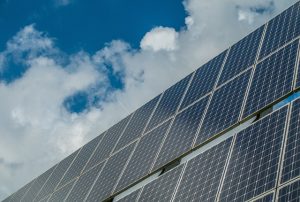
If you’re thinking about investing in a solar panel installation, you may want to familiarize yourself with solar payback periods. Solar panels have become increasingly popular in recent years. According to Pew Research Center, 8% of U.S. homes are currently powered by them. While all solar panels require an upfront investment, they can save you money in the long run. If you know the solar payback period, you’ll have a better idea of when you can recoup your initial investment.
Solar Payback Periods Explained
A solar payback period refers to the time it takes a solar panel installation to generate energy of equal value. In other words, it’s the time it takes to recoup your investment.
A typical solar panel installation may have a payback period of six years. This means that after six years, the collective energy produced by the solar panels will be equal in value to the cost of the solar panels.
Factors That Affect Solar Payback Periods
Solar payback periods can range anywhere from a couple of years to over 10 years. What affects the solar payback period of an installation exactly?
The type of solar panels used in the installation plays a key role in its payback period. Some installations use monocrystalline or polycrystalline solar panels, whereas others use thin-film solar panels. Of those three types, monocrystalline boasts the highest efficiency rates. Therefore, installations consisting of monocrystalline solar panels typically have a shorter solar payback period than those with polycrystalline or thin-film solar panels.
Tax credits can affect solar payback periods. The federal government offers financial incentives to encourage homeowners and business owners to invest in solar power. Solar panel installations purchased between 2020 and 2021 are eligible for a tax credit of 26%, for instance, whereas those purchased between 2022 and 2032 are eligible for a 30% tax credit.
The cost of local electricity may affect a solar panel installation’s payback period. Many utility companies will gladly purchase excess solar power through agreements known as “net metering.” With net metering, homeowners and business owners can essentially sell their excess solar power to a local utility company in exchange for bill credits. High local electricity costs will result in more bill credits and, thus, a shorter solar payback period.
In Conclusion
Solar panels offer a clean and renewable form of energy. Consisting of photovoltaic (PV) cells, they work by converting sunlight into electricity. A solar payback period is simply the time it takes a solar panel installation to generate energy equal to the initial cost.
